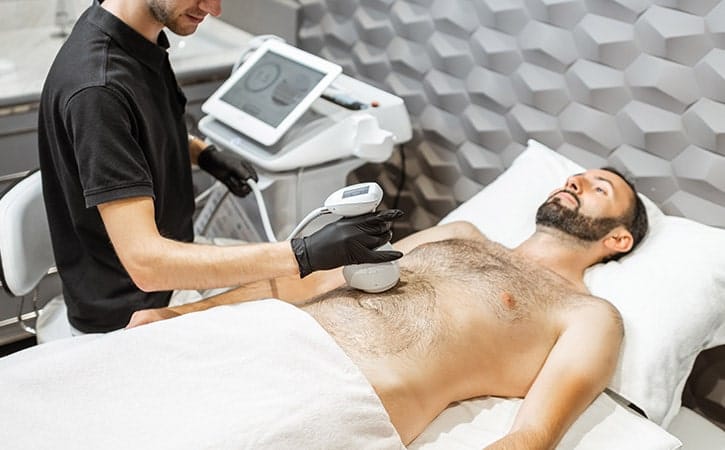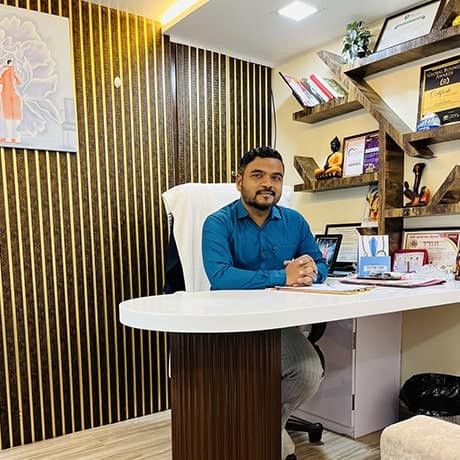Liposuction, also known as lipo or lipoplasty, is a cosmetic surgical procedure performed to remove unwanted fat deposits from the body.
The liposuction procedure is not recommended for everyone. It is important to consult a good cosmetic or plastic surgeon to understand if liposuction is the right treatment choice for you.
Understanding Liposuction
Liposuction is a type of surgery that involves the removal of excess fat from specific parts of the body. This procedure is usually used to provide proper contour to the abdomen, hips, buttocks, thighs, and other body parts where diet and exercise have not been effective. It is not a type of weight loss procedure; it is, in fact, a method to remove a pocket of fat that is usually not responsive in otherwise healthy people.
Liposuction roots can be traced back to the 1920s when French surgeon Charles Dujarier introduced the concept of fat removal and body contouring. But it was only in the year 1974 that doctors Giorgio Fischer and Arpad, who worked in Rome, Italy, developed a blunt tunnelling technique for liposuction from which other modern liposuction techniques started evolving.
Eligibility for Liposuction
Not everyone is considered to be an ideal candidate for undergoing liposuction. Individuals who meet the following criteria are considered to be eligible for undergoing liposuction:
- Adults having an average or slightly above-average body weight.
- Adults with good general health.
- Individuals having good muscle tone and firm skin with elasticity.
- Individuals having pockets of fat that do not respond well to exercise and diet.
- Adults who do not smoke.
- Individuals having realistic treatment outcome goals.
Types of Liposuction
Depending on the goals for liposuction treatment, different types of liposuction procedures may be performed. The different types of liposuction procedures include:
- Tumescent liposuction: This is the most common type of liposuction procedure. The procedure involves the injection of saline or salt water by the surgeon into the patient’s fatty areas. This mixture contains medications like epinephrine, that helps in shrinking the blood vessels. This enables the surgeon to remove the fat easily and reduce the loss of blood.
- Suction-assisted liposuction: This is a traditional type of liposuction procedure in which the surgeon uses a vacuum to remove the fat from the body.
- Power-assisted liposuction: This is a precise type of procedure that involves the use of a small, stainless steel tool or cannula that moves back and forth over the fat to break it up and then remove it.
- Ultrasound-assisted liposuction or UAL: This procedure involves the use of ultrasonic energy using a metal rod placed underneath the skin to liquefy the fat before the surgeon removes it from the patient’s body.
- Vibration Amplification of Sound Energy at Resonance or VASER: This is a modified type of UAL procedure. It involves the use of a cannula or stainless steel tool with grooves and ultrasound waves to break up and remove the fat and fat cells from the patient’s body.
- Laser-assisted liposuction: This procedure involves the use of strong laser lights on a fiber (a small, flexible tube) to break down and liquefy the fat to remove it easily. The procedure can be performed by making a small incision in the skin.
Benefits and Goals
Liposuction has several benefits for patients who undergo the procedure. Some of the key advantages of liposuction are:
- Removal of stubborn fatty areas from the patient’s body that do not respond to exercise and diet.
- An improved body contour and shape.
- Improved appearance and self-confidence.
- Minimal scarring after the surgery.
It is important to discuss with your plastic surgeon your treatment result expectations and goals. The surgeon will explain to you the expected results and possible risks of the procedure. It is important to set realistic expectations from the procedure to avoid any disappointment later.
Risks and Potential Complications
Just like any surgery, liposuction also has certain risks. The possible risks associated with a liposuction procedure are:
- Bleeding
- Allergic reaction to the anesthesia used
- Irregularities in contour
- Infection
- Numbness in the treated area
- Changes in skin sensation
- Scarring
- Poor wound healing
- Swelling
- Skin discoloration
- Seroma (fluid buildup) under the skin
- Puncture of an internal organ
- Fat embolism (Trapping of fat pieces in a blood vessel to gather in the lugs or go to the brain)
- Heart and kidney problems
Choosing a skilled and experienced plastic surgeon can reduce the risk of developing complications after liposuction surgery.
Customized Treatment Plans
The type and technique of liposuction procedure performed will depend on the anatomy and treatment goals of an individual.
The plastic surgeon will assess the patient carefully and make a personalized treatment plan for each patient based on the patient’s body anatomy, the health of the patient, the patient’s requirements, and realistically what can be achieved using the procedure.
Dr. Vinod Pachade is a renowned plastic surgeon at PVR Aesthetica, a cosmetic clinic in Navi Mumbai. He customizes treatment plans for all his patients to provide the best possible treatment outcomes. You can book an appointment with us today
Preparing for Liposuction
Like any other surgery, liposuction will also involve a few preparatory steps before the procedure. The preparation for liposuction will include the following steps:
- The patient needs to inform the plastic surgeon about his or her medical history and medical conditions in detail.
- The patient should inform the surgeon about any medications or supplements that he or she may be currently taking.
- The doctor will recommend undergoing some lab tests to check the patient’s general health condition and the presence of any underlying medical conditions.
- The surgeon may ask the patient to stop taking anti-inflammatory and blood-thinning medications at least a few days before the surgery.
- Women patients may be told to stop the consumption of contraceptive pills a few days before the surgery.
- Patients having anemia will be asked to start taking iron supplements before the surgery.
- The patient will be informed about all the benefits, potential risks, and possible alternatives to the procedure before undergoing the surgery. The patient will be asked to sign a consent form before starting the procedure.
Recovery and Aftercare
The recovery timeline following a liposuction procedure will vary among different patients depending on the type of liposuction procedure they have undergone and the general health of the patient. The recovery steps following a liposuction procedure are as follows:
- Patients who have undergone the procedure under the effect of general anesthesia may have to spend a night in the hospital after the procedure. However, patients who have undergone the procedure under local anesthesia can usually leave the hospital on the same day after the procedure.
- An elasticated support corset or compression bandages are fitted on the target area.
- Compression garments need to be worn for a few weeks after the procedure.
- The patient needs to take adequate rest for two to three days after the surgery.
- Mild activities like walking can be resumed one day after the surgery. However, strenuous activities should be avoided for the first few weeks after the surgery.
- It is normal to have some pain, swelling, bruising, and numbness in the area where the fat was removed for a few days after the surgery.
- The doctor will prescribe certain painkillers to relieve the pain and discomfort after the procedure.
- The surgeon will be removing the stitches one to two weeks after the surgery.
- It can take up to six weeks before the patient can resume his or her daily activities. Complete recovery, however, may take up to six months.
Costs and Financing
The cost of liposuction varies depending on several factors. Generally, the cost of liposuction ranges from INR 30,000 to INR 3,50,000. The different factors that influence the price of liposuction are:
- The area being treated
- The fat volume
- Type of liposuction technique being used
- Expertise and skill of the plastic surgeon
- Choice of clinic or hospital for treatment
- Location of the clinic or hospital
- Charges of diagnostic tests done before the procedure
- Charges of the medications given before and after the surgery
- Hospital charges
- Charges of support devices after surgery, such as compression garments
- Follow-up consultation charges
Conclusion
Liposuction is a permanent cosmetic surgical procedure performed to remove stubborn fat deposits from the body that cannot be removed after proper diet and exercise. This procedure can help in improving a person’s body contour and help him or her to look and feel good. Liposuction is not a type of treatment for weight loss and it is important to keep a healthy weight after the surgery to maintain the new body shape.
A good plastic surgeon will let you know if you are the right candidate for undergoing a liposuction procedure after a thorough evaluation.


